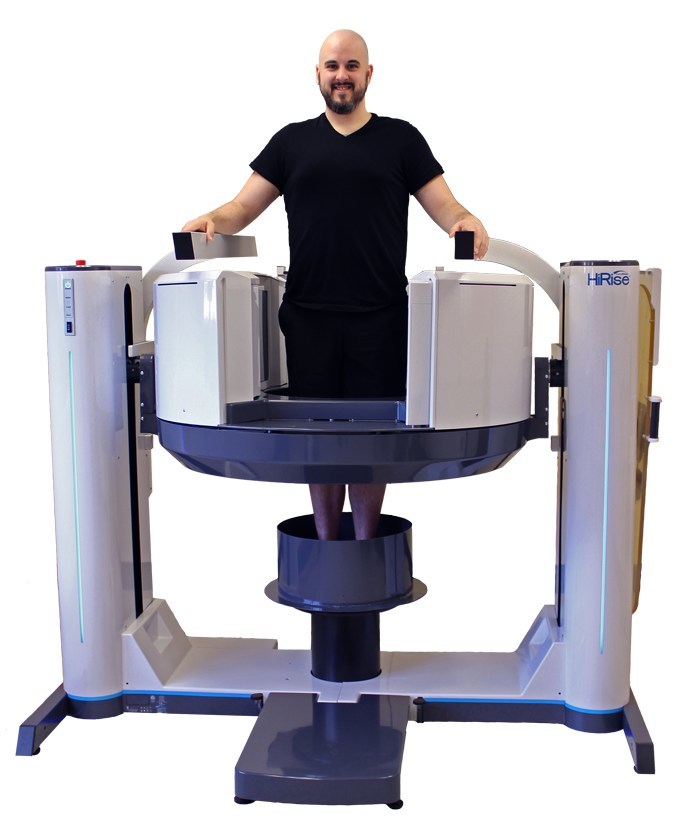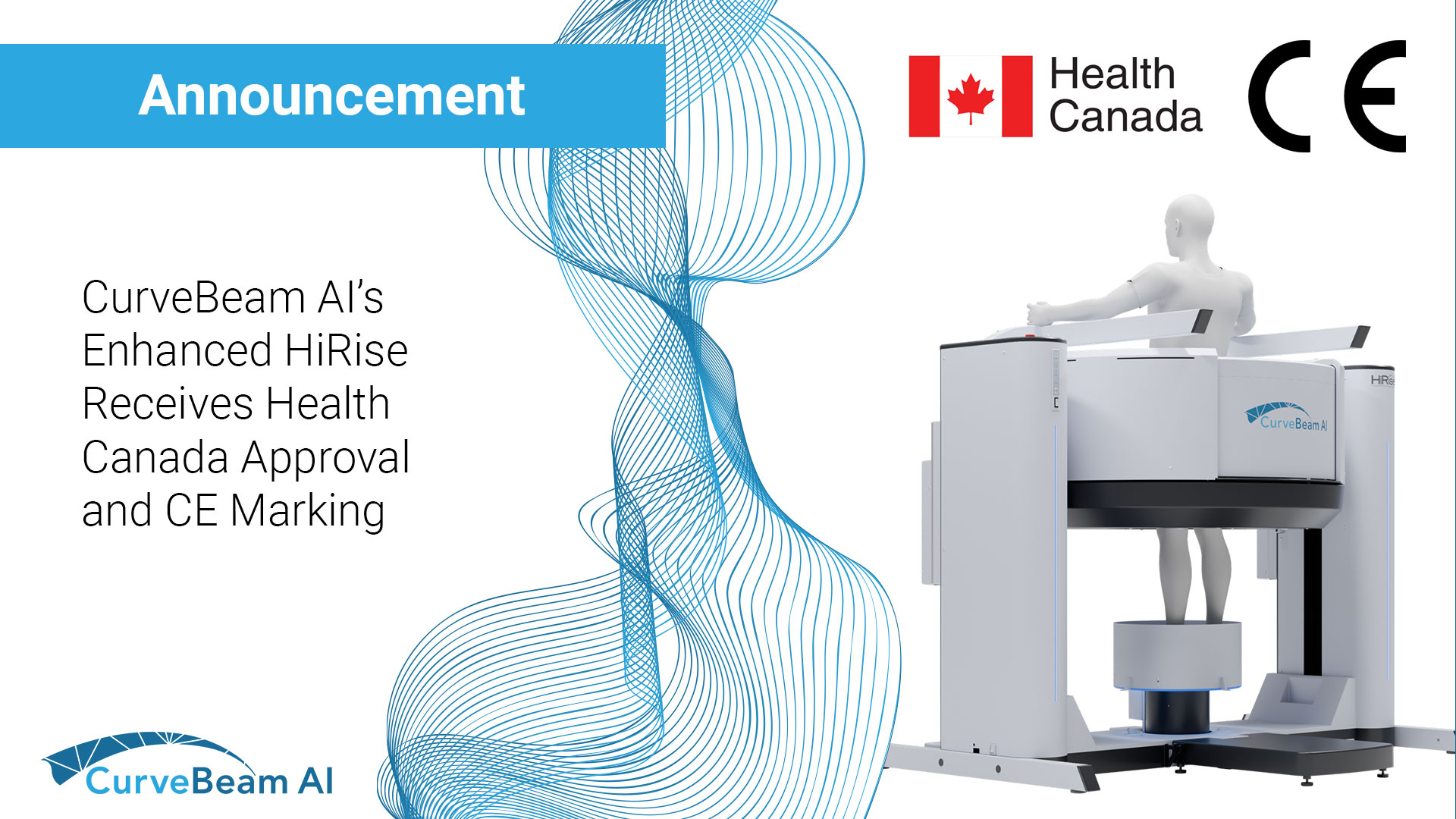Hatfield, PA — July 1, 2025 — CurveBeam AI, a global leader in weight bearing…

CurveBeam Announces Development of Weight Bearing CT Imaging System that will Scan the Hip and Pelvis
CurveBeam is proud to introduce the next level of weight bearing CT imaging, which will have the unique capability of scanning the hip and pelvis in weight bearing position, at the 2019 RSNA Annual Meeting.
With the HiRise, musculoskeletal radiologists and orthopedic specialists will be able to assess alignment of the total leg in three dimensions.

The HiRise is investigational only and is not available for sale in the United States.
The HiRise will permit visualization of the femoral head within the acetabulum. These scans could be used in pre-operative planning for knee replacement surgery, as surgeons will be able to assess alignment of the femoral head to the knee joint in three-dimensional weight bearing position.
Learn more about the HiRise at the RSNA Innovation Theater on Wednesday, Dec. 4 at 11 a.m.
CurveBeam’s weight bearing systems boast the largest patient platform and field-of-view in their class. Patients can stand naturally with both feet side-by-side. Both the left and right limb are captured in a single scan.
“The weight bearing position allows surgeons to make better decisions regarding alignment during pre-surgical planning,” said Dr. Robert Santrock, MD, an associate professor at West Virginia University Health System. “Bilateral weight bearing imaging enables concomitant deformities to be assessed.”
The wide bore will allow for continuous scanning along the lower limb via multiple orbits, with patient remaining still in one position.
The HiRise gantry will raise and lower along a vertical track for lower extremity scanning. The gantry will tilt 90 degrees for upper extremity scans as well as non-weight bearing lower extremity scans. An optional table will allow patients to be fully supine during non-weight bearing scanning if necessary.
“Extremity cone beam CT systems are utilized as a point-of-care modality to improve workflow and have been widely accepted by the orthopedic community for lower extremity applications to provide an accurate weight bearing assessment of alignment,” said Dr. John Carrino, MD, MPH, Vice Chairman of Radiology for the Hospital of Special Surgery.
CurveBeam utilizes cone beam CT technology (CBCT) in its systems. CBCT images are initially acquired as two-dimensional projections using a rotating gantry with a relatively low-power X-Ray source, a pulsed X-Ray beam and a flat panel detector. The projections are reconstructed into a volumetric dataset. Cone beam CT scans are optimized for trabecular detail.
With an approximate footprint of 60″ x 73″, the HiRise will be a practical solution for outpatient settings. In addition, the HiRise will plug into a standard 120V outlet and is anticipated to require minimal external shielding.
Radiation dose of a cone beam CT scan of the distal extremities is typically a fraction of a comparable conventional CT scan of the same region.
To learn more and see the HiRise on display, visit CurveBeam at RSNA in South Hall – 1404. Visit www.curvbeam.com, call 267-483-8081 or email info@curvebeamai.com to set up a demo.




